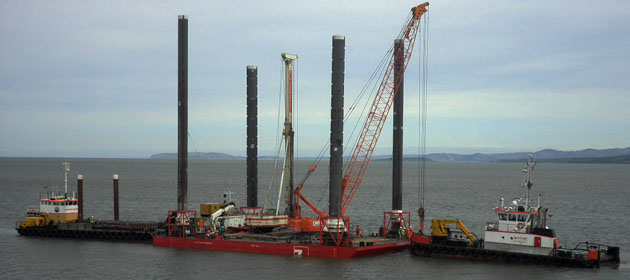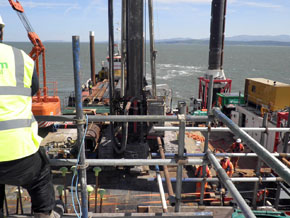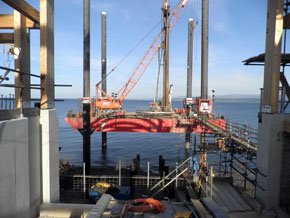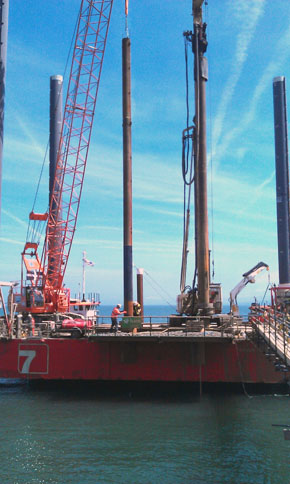Moelfre Lifeboat Station
Anglesey

The Royal National Lifeboat Institution is the charity that saves lives at sea. Its volunteers provide a 24-hour search and rescue service in the United Kingdom and Republic of Ireland from 236 lifeboat stations, including four along the River Thames and four inland lifeboat stations. Additionally the RNLI has more than 1,000 lifeguards on over 180 beaches around the UK and operates a specialist flood rescue team, which can respond anywhere across the UK and Ireland when inland flooding puts lives at risk.
The Moelfre RNLI Lifeboat Station on the Anglesey coast has been operating since 1830. It has a remarkable history of bravery with its lifeboat crews being awarded 37 Medals for gallantry. This station is classed as an Explore station. Explore stations offer the best visitor experience. With free access, you can go inside and look around the station, see the lifeboat and, in most cases, pre-book a tour.
Foundations for the new £10m Moelfre facility were required to anchor the new replacement slipway into the sloping rock surface beneath the site.
A total of 22no bored and cast in situ piles were installed using 'Down the Hole Hammer' (DTHH) techniques to depths varying between 13m and 16m below barge level. The piles were socketed up to 5m into the underlying Strong Limestone bedrock.
Access to the pile positions was achieved by working off a 250 tonne jack up barge fitted with a double set of gates such that two piles could be installed from each barge set up position. During the setting up process the gates were accurately positioned and then welded to the barge deck.
The C26 piling rig then introduced the drill string comprising an odex casing fitted with a down the hole hammer. The odex casing was oversized at 640mm to permit the final placement of the permanent casing inside. The drill string was lowered though the gates and down to the sea bed. The bore was then progressed using the hammer until the required toe level was reached. The arisings were flushed up inside the odex casing using a combination of air from three 125 cfm compressors and water.
The piling rig then moved to the next location whilst the attendant crane inserted the inner permanent casing and grouted up both piles. An air pump was used to remove any remaining debris from the rock socket.
The piles were thus completed in pairs using grout fed from a 4/10 colloidal mixer. The grout was fed to the barge by way of a grout line supported/suspended from the pedestrian walkway linking the barge to the shore. The piles were grouted by the tremmie technique of upward displacement using a central full length grout tube. Where the top of the permanent pile was below the barge level its length was extended using a follower tube to permit the required accuracy to be maintained.



